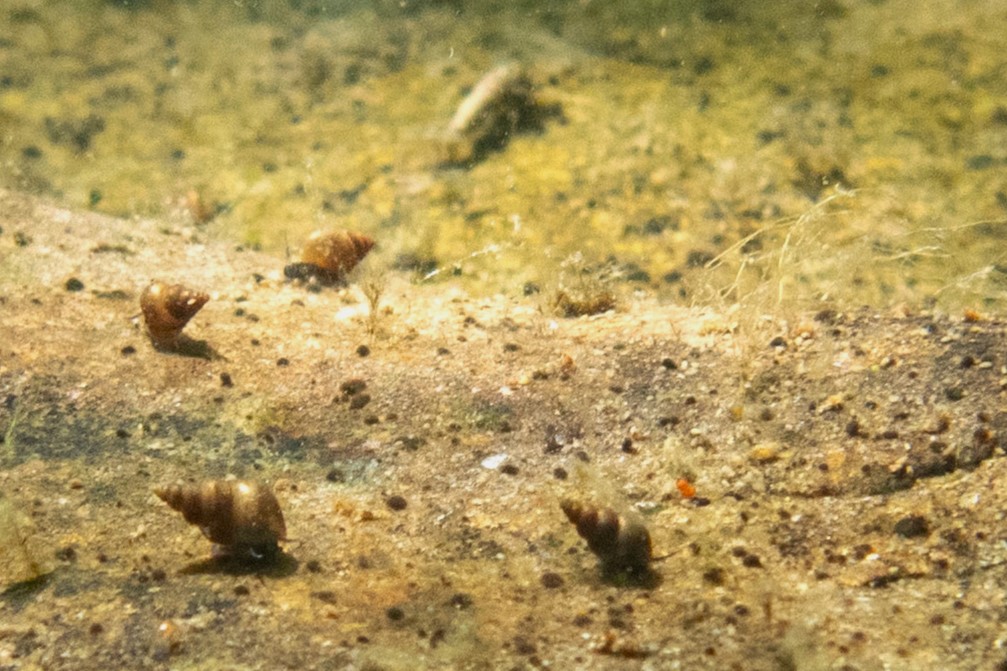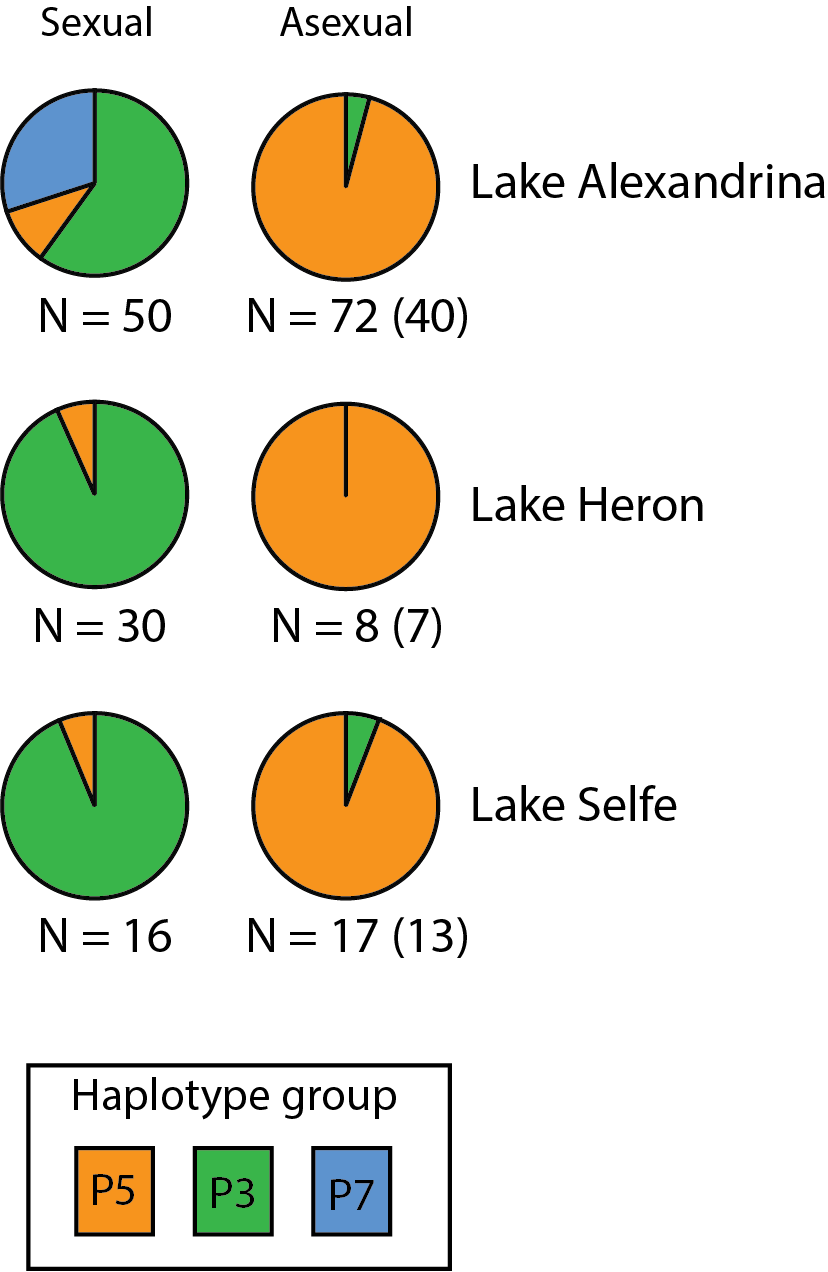The Apomixis Question
In the New Zealand snail Potamopyrgus antipodarum the asexual females are triploid. At least two steps are needed in transition to apomixis. First, normal meiosis needs to be modified to generate diploid gametes, and second, these diploid gametes need to develop to a fertile asexual individual. The last step often includes an increase in ploidy to a triploid state resulting from fertilization of a diploid gamete by a regular haploid gamete. The new lineage then produces offspring clonally and needs to establish in the population in competition with the sexual lineages. This is how we have envisaged the triploid Potamopyrgus lineages to have emerged.

However, there is something we do not quite understand. Paczesniak et al. (2013) found that the mitochondria do not seem to follow the pattern described above. We found that one mitochondrial haplotype group was overproportionally common in the apomictic parthenogens compared to the sexuals. This haplotype group was widespread across the lakes of the South Island of New Zealand.

Mitochondrial haplotype frequencies (cytochrome-b gene) in three snail populations where sexual and asexual snails coexist. Pie charts indicate the relative frequencies of haplotype groups. Sample size is indicated below each Pie Chart. Number in brackets indicates the number of unique SNP genotypes among the triploid asexual snails based on 20 loci. Figure is drawn based on re-analysis of data in Paczesniak et al, (2013).
Intragenomic conflict could explain why one mitochondrial haplotype group is common in parthenogens. Maternally transmitted plasmid genome might interfere with the nuclear genome biasing offspring sex-ratio towards females as reported in many systems. But intragenomic conflict should not lead to triploidy, thefore, part of the explanation is missing. We aim to test alternative hypothesis for this cytonuclear discordance we have found in Potamopyrgus.
First we aim to verify earlier results with an extensive survey of Potamopyrgus populations and large scale mitochondrial genome sequencing. Is this special haplotype group common in some remote sexual population? Our second goal is to understand how heterozygosity of triploids is preserved in their origin, and which factors promote parasite resistance in the emerging triploids. Latter goal is motivated by our observation that initially resistant clones express exceptional heterozygosity.
The project is funded by Swiss National Science foundation.
Paczesniak D, Jokela J, Larkin K, Neiman M (2013). Discordance between nuclear and mitochondrial genomes in sexual and asexual lineages of the freshwater snail Potamopyrgus antipodarum. Mol Ecol 22(18): 4695-4710.
